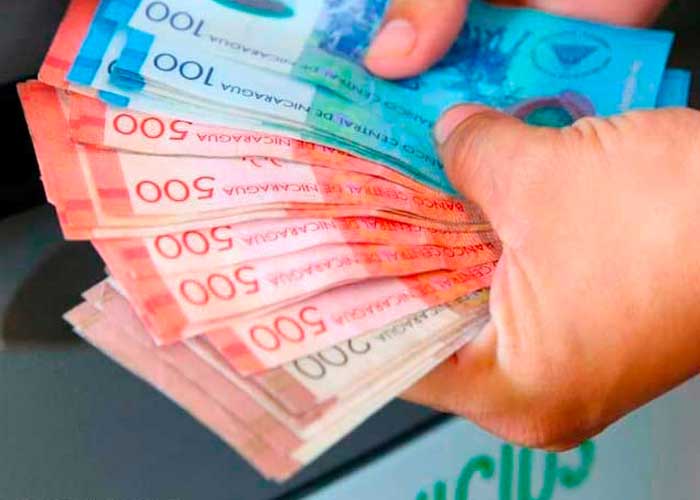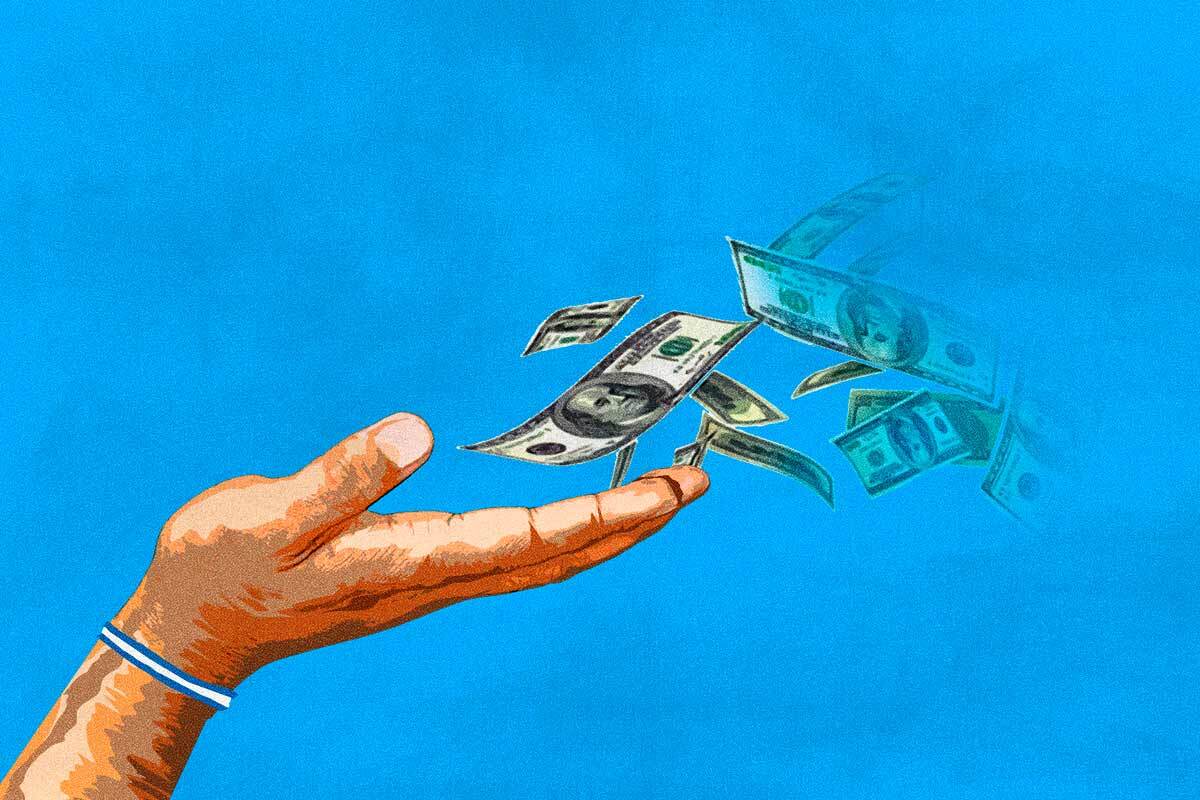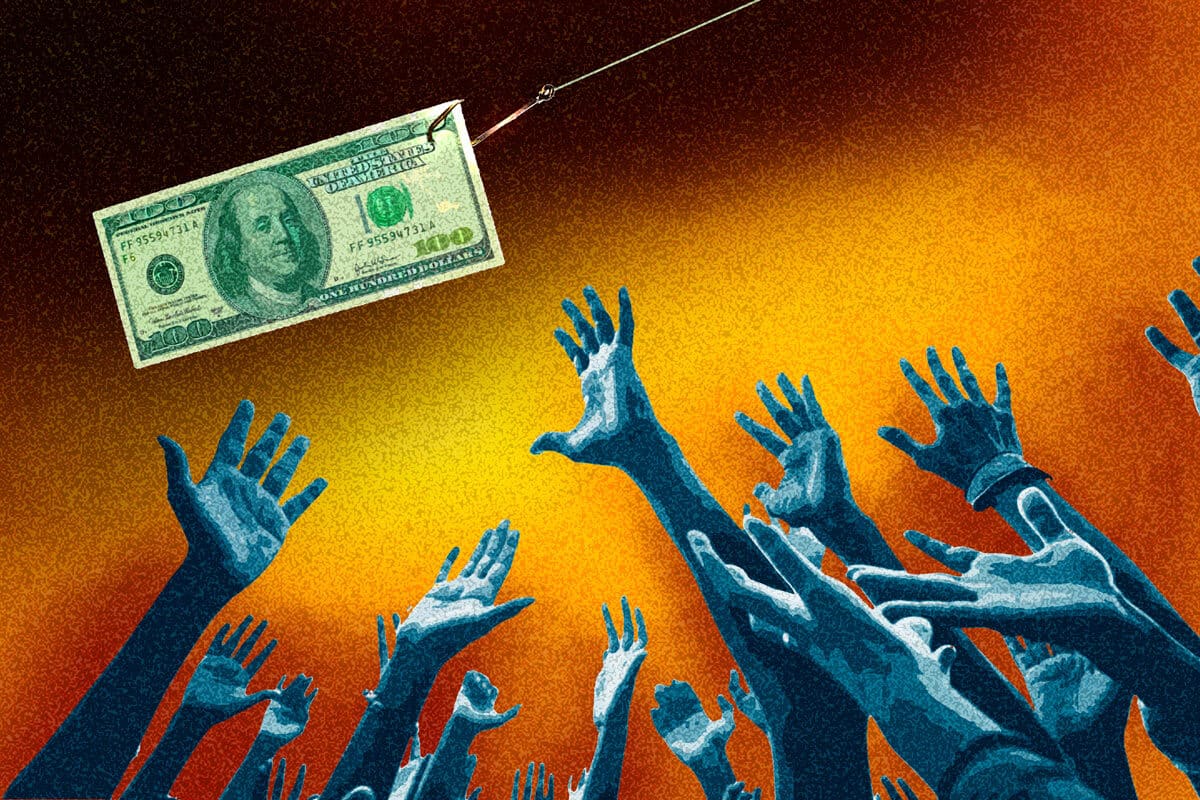Seven out of ten Nicaraguans, when in need of money to start a small business or handle an emergency, don’t turn to a bank. Instead, they look for a lender among friends or family, a nearby microfinance provider, or the local pawnshop. That’s according to the National Financial Inclusion Survey (ENIF), published by the National Institute for Development Information (INIDE), which shows that 70% of people who accessed credit between 2023 and 2024 did so outside the formal banking system.
“The most commonly used sources of financing were microfinance institutions, commercial stores, and private individuals,” the report states.
Only 30% of the population used banks, cooperatives, or regulated financial institutions. The preference for informal credit isn’t coincidental. Most borrowers either don’t meet formal requirements or simply don’t have assets to offer as collateral.
For Nicaraguan economist Marco Aurelio Peña, this is no accident—it’s the result of an economic model that sidelines those who don’t fit the priorities of commercial banks.
“Nicaraguan banks have focused on consumer lending for years because that’s where they make the most profit—mortgages, car loans, and credit cards are their sweet spot,” he explains.
“People borrow to eat, not to grow”
Rather than helping to launch businesses or productive projects, credit in Nicaragua is largely used for basic consumption. INIDE’s report shows that 38.5% of loans go toward essentials like food, healthcare, or education. Less than 20% is invested in entrepreneurship.
“We’re looking at a subsistence debt economy. People borrow to eat, not to grow,” says Peña.
“And the most concerning part is that many get trapped in legal but predatory lending schemes. Some microfinance institutions charge up to 50% annual interest—and that’s still legal,” he adds.
The danger of falling into “gota a gota” loans

In Costa Rica, informal loans known as gota a gota have become a serious social threat. In 2023 alone, the Judicial Investigation Agency (OIJ) recorded 816 extortion complaints linked to this type of loan, many involving physical violence and threats against borrowers, according to local media reports.
The scheme has been described as an “extortion machine,” where criminal groups launder money and charge outrageous interest rates to people excluded from formal financial systems. Today, these loans are officially classified as a criminal offense in Costa Rica, punishable by up to 15 years in prison.
“A demand, a supply, and two overlapping needs converged… an old form of extortion,” warned an OIJ report.
Victims face aggressive collection tactics and violence, including threats, seizure of personal belongings, and even kidnappings if they fail to pay.
Concerns that Costa Rica’s crisis could be replicated in Nicaragua
A security expert, who requested anonymity for fear of retaliation, warns that what’s happening in Costa Rica should raise red flags in Nicaragua.
He adds that the boom in informal lending could turn into a ticking time bomb: “The regime uses frontmen to move and lend money that sanctioned individuals can’t keep in the banking system because of U.S. sanctions.”
“The conditions are ripe: a country with high informality, weakened institutions, no effective regulation, and no clear complaint mechanisms. It’s the perfect environment for loan networks that, instead of offering solutions, become tools of extortion, coercion, and even physical violence—protected by the power the regime grants its frontmen,” the source says.
He emphasizes that without real oversight, lending money at predatory interest rates can easily slide from economic abuse into outright criminal activity, as seen in other countries in the region.
The lenders’ business
Carlos is a moneylender in a working-class neighborhood of Managua. He started five years ago with just $1,500 and quickly realized how profitable lending could be in a country where most people are shut out of the banking system. Today, his loan portfolio is around $30,000, he says—thanks to the 20% monthly interest he charges on each loan.
“I don’t ask too many questions. People come to me when they need to solve something urgent: a medical emergency, buying food, covering an unexpected expense. I don’t ask for paperwork or guarantees, but they do have to pay on time,” says Carlos, who operates without any registration or government oversight—like most informal lenders in Nicaragua.
But that “convenience” comes at a steep price for borrowers. A 20% monthly interest rate amounts to 240% per year. And although usury is technically illegal, in practice it’s normalized due to the lack of real regulation and formal credit alternatives.
A population in debt

That means someone borrowing $300 at a 20% monthly rate would end up paying $720 in interest over a year—more than double the amount originally borrowed.
In many cases, borrowers unable to keep up with payments roll the debt into new loans. “If they don’t pay, they lose whatever collateral they left. And if there’s no collateral, they go to another lender to pay me off,” Carlos admits.
INIDE’s official report shows that 54% of Nicaraguans who took out loans had no real collateral to back them—and many didn’t even have stable sources of income. “41.8% used a guarantor, while only 36.5% offered real guarantees like a house or car,” the document states.
Most of these loans also weren’t aimed at generating income. “The main purpose was consumption at 38.5%, followed by healthcare (13.4%) and education (12.5%),” the survey says. Only a small share went toward small businesses or entrepreneurship.
Regulation that doesn’t regulate
The finance expert also questions the state’s ability to apply regulations fairly—especially when the tax system is already stacked against anyone trying to start a legal business.
“Nicaragua’s tax system is extortionate. It doesn’t even allow taxpayers to dispute claims. Starting a business here is almost an act of bravery,” he says.
According to the financial analyst, this shows that debt in Nicaragua is not a development tool, but a desperate measure to survive: “People go into debt just to get through the month. It’s subsistence credit, not investment—and they take it where they can: outside the banks, without clear contracts, without regulated rates, and without legal protection.”
The Sandinista government highlights in the INIDE survey that 76% of adults have some kind of formal financial product—like a bank account or e-wallet. But even the survey admits that this doesn’t guarantee fair or sustainable access to credit.
“Account usage remains limited, and many users only use them to receive remittances, subsidies, or one-off payments,” the study notes. In other words, while formal access to banking may appear in the data, it doesn’t translate into real financial inclusion—especially not for the majority of Nicaraguans, who remain economically, socially, and professionally excluded.
New rules for lenders
The National Financial Inclusion Survey was conducted by INIDE with support from Nicaragua’s Central Bank. The sample included over 8,000 adults nationwide. This is the first edition of the survey and aims to measure access to, use of, and quality of financial services in the country.
In December 2024, the Ortega-Murillo regime implemented a new regulation requiring all lenders—individuals and businesses—to register with the National Microfinance Commission (CONAMI). Officially, the goal is to curb usury and protect borrowers, but Peña questions whether this framework will make any real difference.
“Regulation hasn’t stopped abusive interest rates. The problem isn’t the lack of laws—it’s that they don’t protect borrowers or promote entrepreneurship. They just keep a discriminatory system running, one that charges the most to those with the least,” the economist says.
The financial reality is that as long as this exclusionary system dominates the country, people like Carlos will remain a lifeline for most Nicaraguan families.





